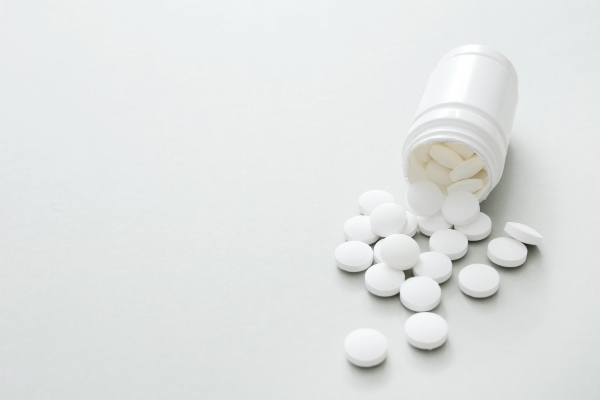What is SIADH?
Syndrome of Inappropriate Antidiuretic Hormone Secretion (SIADH) is a syndrome in which antidiuretic hormone (ADH) is produced in excess. ADH is a hormone produced by the hypothalamus. It is then transported to the pituitary gland where it is stored and released. ADH carries various functions in the body. It primarily controls how your body releases and conserved water. When ADH is released, it tells your body to avoid removing water from your body in order to conserve it. Therefore, it is normally released when the level of water in the body is low. If water is in excess, ADH secretion is decreased to allow removal of water from the body. It is also known under the name vasopressin.
In SIADH, this hormone is released in excess, thus resulting in the inability to release water from the body. This leads to water retention and eventual decrease in the levels of electrolytes (for example: Sodium). When sodium level decreases, this is known as hyponatremia. This is a major complication associated with the syndrome. Hyponatremia is also the most common electrolyte derangement in hospitalized people.
What causes SIADH?
SIADH is when ADH is produced in excess in the body. This can come from a hypersecretion from the hypothalamus itself or from another source in the body (known as ectopic production). SIADH may arise from several causes including:

- Nervous system disorders: These include- Brain abscess, cerebrovascular accident, delirium tremens, inflammation of the brain, epilepsy, trauma to the head, accumulation of fluid in the head, multiple sclerosis, schizophrenia, bleeding in the head or Guillain-Barré syndrome, amongst others.
- Cancers: Cancers arising in various organs of the body can also result in SIADH. These include: lung cancer, gastrointestinal cancers, cancer of the cervix, cancer of the bladder, prostate cancer, tumours in the ovaries, brain tumours and lymphoma.
- Lung disorders: These include bronchitis, respiratory failure, asthma, pneumonia, chronic obstructive lung disease, cystic fibrosis, lung abscess and tuberculosis.
- Medication induced: There are many medications that can result in SIADH. These include: antidepressants, anticonvulsants, antipsychotics, pain medications, acetylcholine and some anticancer drugs.
What are the signs and symptoms of SIADH?
Depending on the severity and rate of development of the disease, the decrease in sodium may or may not lead to symptoms. The following symptoms may arise in SIADH:
- Decreased reaction time
- Frequent falls
- Decreased appetite
- Nausea
- Malaise
- Headache
- Muscle cramps
- Irritability
- Drowsiness
- Confusion
- Weakness
- Seizures
- Coma
- Tremors
- Disorientation
Other symptoms may be present depending on the underlying cause of the syndrome. For example, if a tumour in the lung or head is responsible for the rise in ADH, coughing up of blood or chronic headache may also be present.


How is the diagnosis of SIADH made?
To make the diagnosis of SIADH, your doctor will first start by asking you a series of questions to know more about your symptoms. He/she will then proceed with a thorough physical examination to look for signs of SIADH. Your blood pressure will also be measured. Your doctor will have a look at your mouth and the temperature of your limbs. It is important to tell your doctor if you have any other diseases or medical conditions as some of them may be the cause of the increase in secretion of ADH. You should also make sure to mention each and every medication you are taking, whether pre ion or over-the-counter drugs.
To confirm the diagnosis, your doctor may request some other tests. These include blood or urine tests. The ADH test is done to measure the levels of ADH in the blood. Blood samples are also taken to measure the level of sodium in the blood. If tumours or other diseases are suspected to be the underlying cause of the disease, imaging tests may be needed to know the exact problem. These include magnetic resonance imaging (MRI) or computed tomography (CT) scan.
How is SIADH managed?
The treatment and the rapidity of the correction of hyponatremia depends on how low the sodium has come down or on whether symptoms are present or not. Treatment will also depend on how long the condition has been going (less or more than 48 hrs). If the hyponatremia is corrected too rapidly, central pontine myelinolysis (with permanent neurologic sequelae) can occur. This is when severe damage arises in areas of the brain. Treatment of SIADH includes:

- Restriction of fluid intake: Water is usually restricted to around 500-1500 ml per day.
- Use of furosemide: This is a medication that works by reducing fluid retention. In increases the amount of fluid removed from the body through urine.
- Demeclocycline: This medication work by decreasing the amount of ADH secreted in the body. This will eventually decrease fluid retention.
What are the complications for SIADH?
The following complications may arise following SIADH:
- Cerebral edema: This is when fluids accumulate in the brain
- Pulmonary edema: Fluids accumulating in the lungs
- Central pontine myelinolysis: This is a complication that may arise following a too rapid correction of the hyponatremia. This involves neurological symptoms including confusion and coma.
What is the prognosis for SIADH?
The prognosis for SIADH depends on the underlying cause and the effect of the hyponatremia associated with it. If the condition has found to be induced by a specific medication, the recovery tends to be rapid and complete. People who present with neurologic symptoms or have severe hyponatremia tend to end up with permanent neurologic impairment.

Source:
Thomas, C., 2019. Syndrome of Inappropriate Antidiuretic Hormone Secretion (SIADH)
Cuesta M, Thompson CJ. The syndrome of inappropriate antidiuresis (SIAD). Best Pract Res Clin Endocrinol Metab. 2016 Mar. 30 (2):175-87.
Bartter FC, Schwartz WB. The syndrome of inappropriate secretion of antidiuretic hormone. Am J Med. 1967 May. 42(5):790-806.
Elhassan EA, Schrier RW. Hyponatremia: diagnosis, complications, and management including V2 receptor antagonists. Curr Opin Nephrol Hypertens. 2011 Mar. 20(2):161-8.
Upadhyay A, Jaber BL, Madias NE. Incidence and prevalence of hyponatremia. Am J Med. 2006 Jul. 119(7 Suppl 1):S30-5.
Kumar S, Fowler M, Gonzalez-Toledo E, Jaffe SL. Central pontine myelinolysis, an update. Neurol Res. 2006 Apr. 28(3):360-6.


